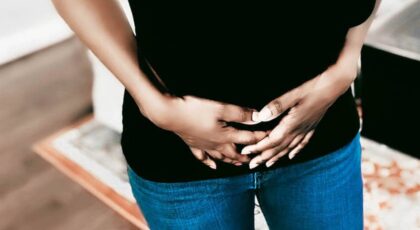
The treatment of polyps has two stages. The first is the removal of the mucous formations, and the second is the rehabilitation period after the removal operation. If the doctor is responsible for the quality of the first stage procedure, the patient has full responsibility over the successful recovery.
The treatment after the polyp removal has the purpose of preventing the formation of the new ones. This treatment is appointed with the consideration of the individual health issues of the patient. The age of the patient, the picture of disease, the type and amount of the formations, the presence of complication and pathologies – everything is taken into account. The treatment can be performed in several directions.
1. Medicament treatment. The preparations mean to relax the muscles of the uterus. If they are tensed too much, it will bleed. It can cause the pathological gathering of the blood masses inside and the cervical spasm. Anti-inflammatory therapy is important too. They reduce the chances of having an infection. If the polyps in the uterus occurred because of the chronic inflammatory process including pathogenic bacteria in the uterus, the antibiotic treatment can reduce the chances of the disease relapse. Antibacterial therapy will help prevent the inflammation in the areas damaged during the operation. If a patient has urinary tract infection that are not completely treated, the antiseptic treatment is a must. The analgesics may relieve the pain after the removal of multiple or large polyps. If the uterine walls were heavily traumatized, a doctor may appoint physical therapy to prevent the appearance of adhesions. Polyvitaminic complexes will help stimulate the recovery processes in a woman’s organism.
2. Hormonal therapy. If the polyps appeared because of the hormonal imbalance, a patient needs hormonal therapy to prevent their appearance in future. The choice of the preparations depends on the clinical picture of the disease. Sometimes hormonal therapy is combined with the anti-cancer preparations.
3. Histology analysis. This examination is required to figure out whether the polyp was able to produce the cancer cells. A female organism undergoes hormonal changes. throughout its entire lifetime. Among such changes is a menopausal period. At this time, there exists a high risk of the polyp transformation into the malignant formations. The specialists in the laboratory are examining the structure of the polyp tissue under the microscope. The example is treated with chemicals to avoid disruption. It may take up to two weeks for the doctor to receive the ready analysis results.
4. A proper diet. The food you eat is also important. A proper diet will perform a positive influence on a female organism and help it regenerate after the polyp removal. The key points are: to eat a lot of meat and fish, include more fruit and vegetables rich with vitamins, avoid very salty and spicy food that boost the infectious processes, limit the alcohol consumption – they slow down the tissue regeneration.





Follow Me